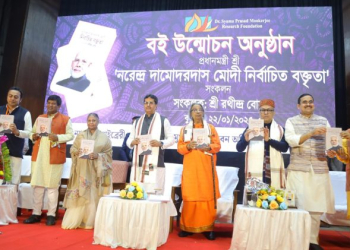New Delhi: The country, as a whole, received excess rainfall in the first three week of January – 31.2 mm as against normal 9.7 mm, marking a departure of a whopping 222 per cent, the India Meteorological Department (IMD) said on Thursday.
During the same time, i.e., the first three week of January, east and northeast India received 12.7 mm against 9.3 mm (36 per cent departure) northwest India received 60.1 mm against normal of 17.4 mm (245 per cent), central India received 21.3 mm rainfall as against the normal of 4.5 mm (373 per cent departure) while the south Peninsula received 18.2 mm against 6.8 mm (168 per cent departure), the IMD said.
The reason for this spike was the rainfall mostly in the week that ended on January 19 (IMD counts weeks from Thursday onwards when it issues the extended range forecast every fortnight) with the rainfall this week was very high compared to the Long Period Average (LPA) with maximum departure witnessed by central India, which received 6 mm rainfall against the normal of 1.4 (329 per cent departure) followed by the south peninsula that received 8.6 mm rainfall as against the normal of 2.3 (276 per cent departure).
Eastward movement of the remnants of last week’s active Western Disturbance with moisture incursion from Bay of Bengal, on one hand, and the cyclonic circulation/troughs in lower tropospheric levels were responsible for the widespread rains, the IMD said.
Dense fog/low clouds cover started on January 11 over Punjab, Haryana, Chandigarh, and Delhi, then moved towards northern parts of Rajasthan, northwest Madhya Pradesh and further extended eastwards covering whole Uttar Pradesh, Bihar and east Madhya Pradesh on January 14.
It almost persisted over such a larger area during almost all days of the week till January 20, making it the most intense fog and low cloud spell over the region in this winter season of 2022 so far.
This also resulted in cold day to severe cold days conditions during almost all days in the week over most of these areas covering Punjab, Haryana, Chandigarh, and Delhi, northern parts of Rajasthan, Uttar Pradesh, and Madhya Pradesh during January 14 to 19 and over Bihar mainly on January 14, 16 and 18-19.
(IANS)



















